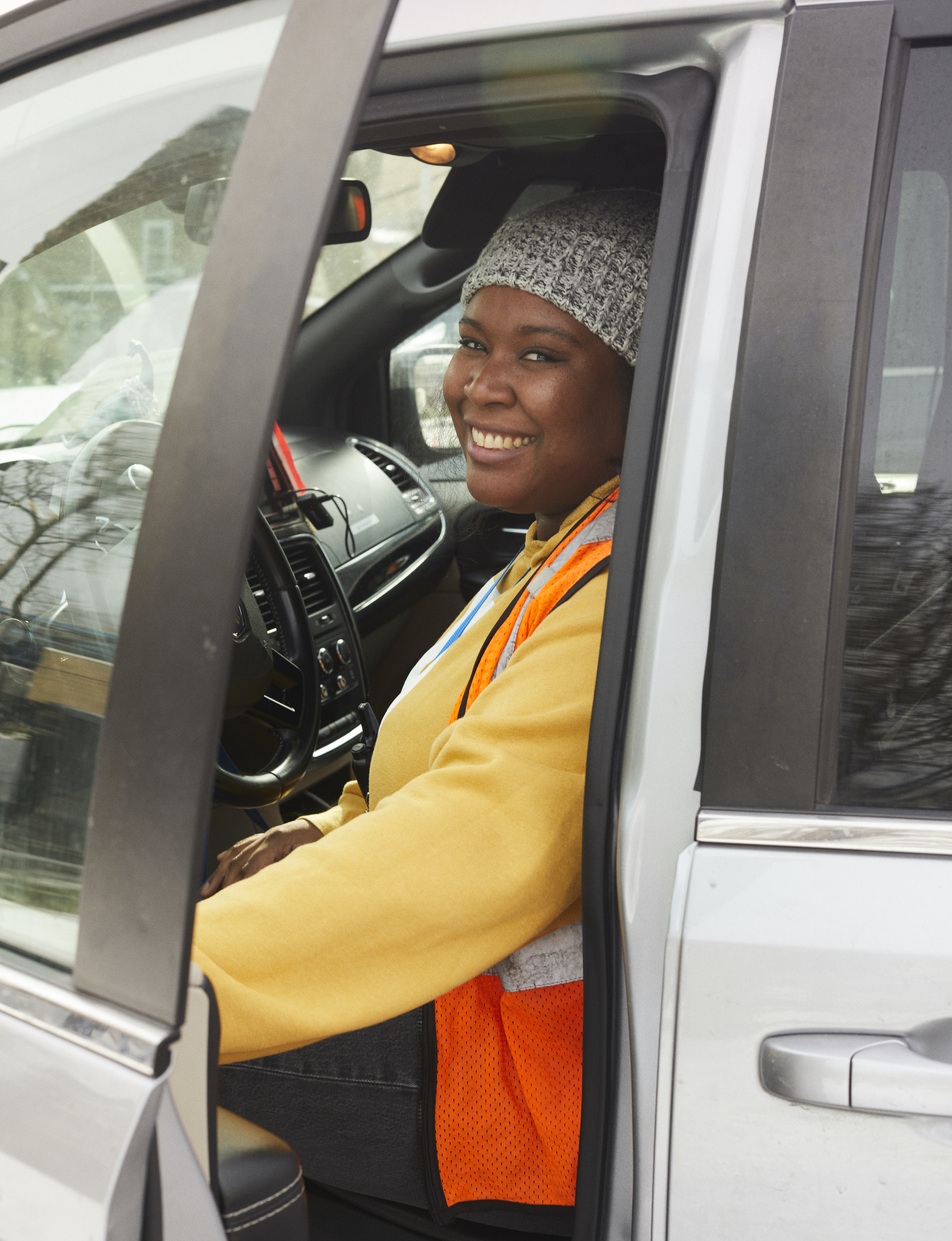Photo: Kit Ramsey. Left to right: Raquel Robinson, Cassidy Morrison, Wayne Young, and Veronica Chappel.
PPP's Homeless Outreach team travels across Kensington five days a week connecting people to shelter, treatment, and other urgently needed services. According to Homeless Outreach Coordinator Raquel Robinson, no two days are ever alike.
“Every day I have a plan. And every day I have to accept that my plan will definitely change based on people’s needs,” she said.
Raquel’s team – Veronica Chappel, Cassidy Morrison, and Wayne Young – are committed to going the extra mile to connect people to services, sometimes driving up to an hour to bring someone to a shelter with an open bed.
“A lot of outreach workers have lived experience,” Veronica said. “There is a reason why we do this. It's not a job you do for the money.”
Here’s how a recent winter day shows the range of interactions with people experiencing homelessness:
8:00 am: Raquel arrives at the outreach office. She turns on her phone and already has several messages from community members, parents searching for their children, and other local organizations. It’s a Code Blue, and she checks her email to see what resources are available. She begins to plan the day for her team.
11:00 am: Raquel’s team arrives. They call the City’s Outreach Coordination Center (OCC) to let them know they’re at work, and Raquel briefs her team on available resources and plans for the day.
11:30 am: The team departs Prevention Point’s Beacon House emergency shelter to respond to their first call. An individual is sitting outside an Allegheny Avenue store, and the shop owner who called doesn’t want him there.
“I'm always glad to talk, present services, and see what they need,” Raquel says.
12 pm: They arrive at the shop. A man fitting the description from OCC is sitting outside. Raquel and Veronica introduce themselves and start up a conversation. The man says he’s been in and out of shelters for three years.
“My stuff always gets stolen. I’m not getting the help I need. I want to work,” he says.
He tells Raquel and Veronica that the curfews at most shelters have made it impossible for him to hold down a job, and he ultimately wants to be in his own apartment. Raquel conducts a housing assessment, and he agrees to have the team drive him to a shelter to get out of the cold.
Raquel says she will take him on as a new client and follow up with him the next day.
“I will help him on his journey until he reaches his housing and employment goals,” she says.

1:30 pm: The team receives a call about a woman who is asking for shelter. OCC gives them a physical description and an approximate address.
2:00 pm: The team arrives at the address, but no one is there, so they drive around the neighborhood looking for someone who matches the description.
2:30 pm: They spot the person they’re looking for. They introduce themselves and invite the woman to warm up in the van. The woman expresses interest in shelter and Cassidy starts offering options. She notices that the woman has cuts and bruises. They provide her with clothes, hygiene products, wound care supplies, and safer sex supplies.
“We meet her immediate needs first and build trust, especially since she seems scared,” Cassidy says.
The woman starts to open up about her situation, and the team realizes that she is in crisis. With her consent, they decide to connect her to a program that fits the needs of her specific situation.
4:30 pm: The team departs the domestic violence shelter, promising to check in on her the next day. They stop at an encampment to see if anyone is interested in shelter. They distribute wound care supplies, Narcan, and warm socks, and take time to chat with each individual in the encampment. A crucial part of outreach work is building and nurturing relationships in the community.
Suddenly, someone nearby runs over, shouting, “He’s not breathing! I called the ambulance!”
They grab their red emergency response bags and run to the unconscious individual, who is completely blue. Raquel administers Narcan, Veronica monitors his blood oxygen levels, and Wayne looks out for the ambulance. After a second dose of Narcan, the young man regains consciousness.
The team informs the man what has happened and that they have given him Narcan. They also relay the sequence of events to the ambulance worker.
5:30 pm: The team heads back to Beacon House, stopping at another encampment along the way to distribute handwarmers and snacks. They complete their paperwork for the day, entering their new clients’ information into the city’s database.
7 pm: The team goes home to rest up before another day of life-saving outreach work.